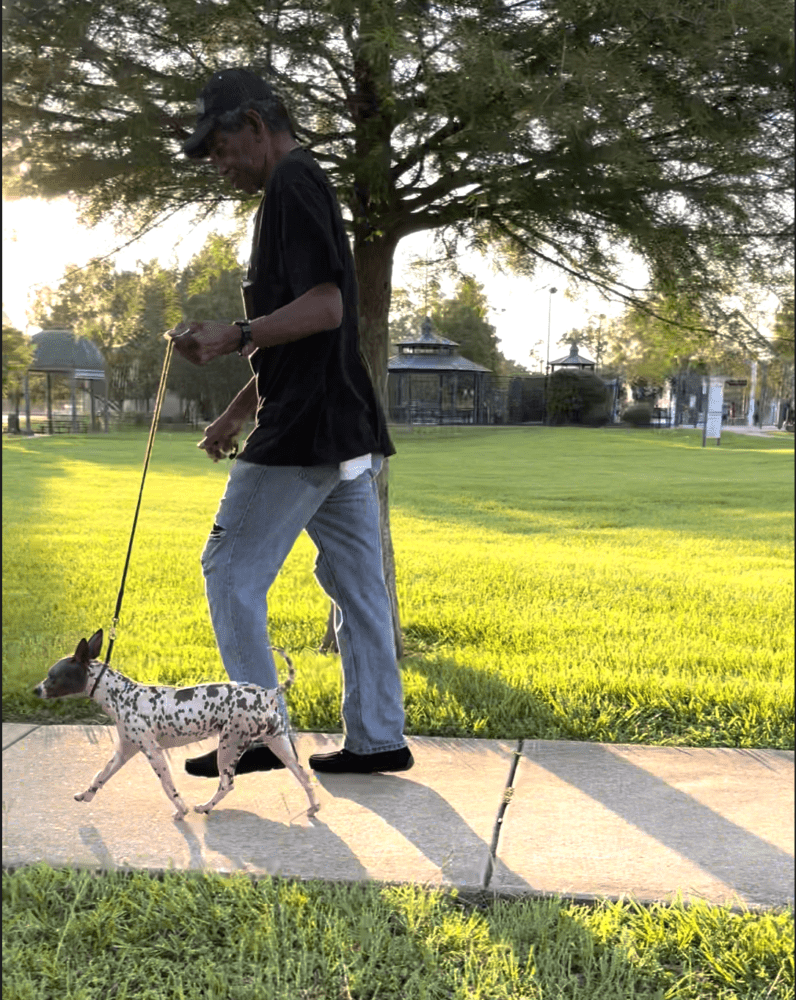Royal Flush American Hairless Terriers

AHT Breed Standard
American Hairless Terrier Breed Standard
The American Hairless Terrier breed is the only indigenous hairless dog to the United States. This dog breed is a genetic descendent of the Rat Terrier. Small to medium sized, nicely muscled, and lively, the AHT is an active breed of terrier.
AHT Breed History
In 1972, a litter of medium-sized Rat Terriers was born from regularly haired parents, only one was born without hair. The Scott family acquired the hairless pup and named her Josephine. She was bred and birthed another hairless female who was named Gypsy.
Eight years later, Josephine gave birth to two hairless children named Jemima and Snoopy after having several litters of coated puppies. Snoopy mated with his sisters in 1983 and produced a number of hairless kids.
The American Hairless Terrier Club of America was created in 2009. Another eight years later, the breed gained full AKC recognition. And boom! The AHT was finally official.
The breed’s ancestors were developed to hunt rats and other vermin. The American Hairless Terrier’s hairless variation is inappropriate for the majority of hunting activities due to its lack of a coat. However, they still have a keen hunting instinct and are excellent in a wide range of other pursuits.
Temperament: Energetic, Alert, and Curious!
The dog breed has a bouncy gait that reflects his true terrier temperament. There are no inside or outward turns of the legs, and there is no interlocking of the feet. Feet have a tendency to move closer to the centerline as speed rises without really crossing it.
Coat
Their very short, delicate coat and skin can occasionally be a single color or a blend of two or three hues including black, sable, blue, brindle, red, or brown. AKC breed standard excludes albino and merle from official breed recognition. A soft, embryonic “down” called the “birth coat” is present on hairless puppies at birth.
Height and Weight
The ideal wither height for hairless terriers is between 12 and 16 inches, with an average weight of 12-16 pounds. The body is rectangular and has a 10:9 ratio when measured from the prosternum to the point of the buttocks and from the withers to the ground. It is also somewhat shorter than tall. The look conveys alertness, curiosity, and intelligence.
Head & Facial Expression
The head is proportionate to the size of the body and produces a blunt wedge shape when viewed from the front or side. The expression exudes intelligence, interest, and awareness. The eyes are expressive, obliquely set, round, prominent but not overly large and should be the same color.
Front Assembly
The top points of the shoulder blades are well-relaxed and close together at the withers. The length of the upper arm and shoulder blade appear to be equal, with shoulders well laid back and a pronounced fore chest. Elbows are close to the body and shoulders have smooth muscles. From any angle, the forelegs are powerful, straight, and have sturdy bones.
Teeth & Bite
The scissors bite is formed by white, firmly grown teeth. A level bite is acceptable. It is improper to have an overshot or undershot bite.
Ears
Ears are V-shaped and situated on the outside rim of the skull. Although erect ears are preferable, pointed or button ears are acceptable. In carriage, both ears should be the same size. Rose ears, flying ears, upright ears with sides bent inward to produce a tulip petal shape, and non-matching ear carriages are all unacceptable.
Feet
Feet should be compact and slightly oval in shape. A little bit longer than the other toes are the two middle toes. Even if the toes are clearly separated, the foot should not be flat or spread. Front dewclaw removal is optional, but rear dewclaw removal is required.
Forequarters & Hindquarters
The forequarter and hindquarter angles are balanced with one another. The hocks are well let down and the shoulders are well bent. The short, powerful rear pasterns are parallel to one another and perpendicular to the ground when viewed from the back.
Tail
The tail extends from the croup, almost to the hock, and is thick at the base before tapering toward the tip. When the dog is attentive, the tail is carried upward in a slight curve and may be carried out behind the dog or up in a slight curve when the dog is in motion. The hairless variety’s tail should never be docked. Tail docking is acceptable and optional on the coated variety. A bent tail, ring tail, or curled tail should be avoided.
Chest
When viewed from the front, the chest between the forelegs is quite wide and well-filled. When seen from the side, the forechest extends in the form of a little oval in front of the forelegs.
Finding a AHT Breeder
The majority of trustworthy breeders gain their reputation by placing healthy puppies in deserving homes, which generates “word of mouth” recommendations. Spend time choosing a fun family dog from the best breeder with a good history. Be aware that finding the ideal pet for your family involves more than just seeing a “doggie in a window.” Contact Royal Flush to learn what makes our dogs the best!

